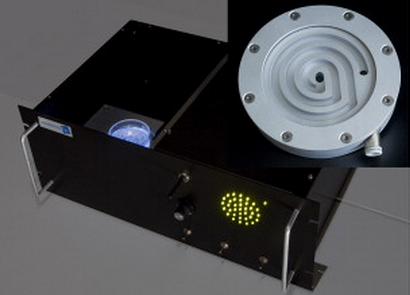Application of UV-LED in sterilization and disinfection water purification
Water is the source of life and the premise of urban survival and development. Therefore, the quality of urban water supply directly affects the healthy development of the city. With the rapid increase of population, the rise of urbanization and the rapid development of industry, the crisis of water shortage is an urgent problem faced by many countries and regions. Drinking water safety is an important part of national public health safety system, which is related to people's health and social stability.
Ultraviolet is a kind of light wave with high energy and can not be recognized by the naked eye. Its wavelength is less than 400nm and exists outside the ultraviolet end of visible spectrum, so it is called ultraviolet. According to the wavelength range, it can be divided into four bands: UV-A (320nm-400nm), UV-B (275nm-320nm), UV-C (200nm-275nm) and uv-d (100nm-200nm). Among them, a, B and C are also called disinfection ultraviolet. A. B and C wave band had certain disinfection effect, especially C band had the best disinfection effect. According to the theory of light quantum, light is a special form of matter motion, which is a flow of particles that are not connected. Each UV photon with 253.7nm wavelength has 4.9ev energy. The disinfection and sterilization of water by UV line is mainly the maximum absorption wavelength of nucleic acid (DNA) (254nm). DNA can absorb high-energy ultraviolet radiation, cause adjacent base dislocation and form pyrimidine dimer; inhibit or hinder nucleic acid replication and protein expression, leading to cell apoptosis. At present, the research is only limited to the mechanism of traditional ultraviolet inactivation. As a new disinfection process, UV-LED may be more or less different from the traditional disinfection mechanism. Therefore, the research on the mechanism of UV-LED disinfection needs to be further strengthened.
In recent years, some researches on UV-LED disinfection have been carried out gradually. The relationship between luminous flux and several non pathogenic microorganisms was studied by UV-LED technology. Based on the number of UV-LED and the distance between samples, COMSOL multiphysics is used to create the best UV-LED collimating beam, which reduces the overall cost. The inactivation effects of three kinds of microorganisms (E.coli, hepatitis B virus strain, T7) were detected by optimized UV-LED collimating beam and low-pressure mercury lamp collimating beam device. The relationship between UV energy density and inactivation effect was compared. The UV wavelengths were: UV-LED (255nm and 275nm) low-pressure mercury lamp 254nm. The results showed that the inactivation effect of low-pressure mercury lamp on Escherichia coli and MS-2 was better than that of UV-LED; when the wavelength of UV-LED was 275 nm, the inactivation effect of T7 phage and E.coli was better than that of UV-LED (275 nm). The time dose difference may be due to the repair mechanism of microorganisms themselves. In addition, the applicability of GaN based UV-LED technology in water disinfection process is studied. The results show that UV-LED is an alternative technology for decentralized and mobile water treatment systems. The performance characteristics of UV-LED technology under different water treatment conditions were evaluated, and the bioanalysis experiments of Bacillus subtilis at 269nm and 282nm were designed. The results show that UV-LED can effectively inactivate the experimental objects under both dynamic and static conditions; dynamic experiments show that the inactivation effect is linear with luminous flux. The inactivation effect of UV-LED on biological indicator bacteria (E.coli faecalis) in sewage was studied under the conditions of UV-A and UV-C. Through simple bacterial culture, four indicators, such as bacterial concentration, exposure time, pH value and wavelength, were detected. It was found that the correlation between wavelength and exposure time was stronger. In addition, the sterilization effect of two wavelengths (280 / 365 nm and 280 / 405 nm) was tested. No bacteria survived after 60 s exposure.

Development of deep UV LED
Technology sharing · December 6, 2020 · 1318 views
Ultra clean semiconductor plant of szech technology put into operation
Company News, February 10, 2018, 1982 views
Professor Chen Changqing, chairman of the board of deep violet technology, was invited to give the conference report "semiconductor UV LED and its application
Company News, December 29, 2017, 870 views
The source of wisdom and life -- the application of deep UV in water purifier
Technology sharing · May 27, 2021 · 201 views
Good News | Warmly Celebrating Our Company's Dr. Chen Jingwen's Selection into the "China Optics Valley 3551 Talent Plan"
Company News, June 28th, 141 views
Water related approval approved, and Youweixin has obtained authoritative certification in the field of drinking water hygiene and safety
Company News, September 24th, viewed 97 times
Youweixin has won the first prize in the Wuhan Science and Technology Innovation Competition!
Company News, January 15th, 33 views
[video tutorial] deep design of deep UV uvc-led sterilization scheme
Technology sharing · February 11, 2020 · 1410 views
